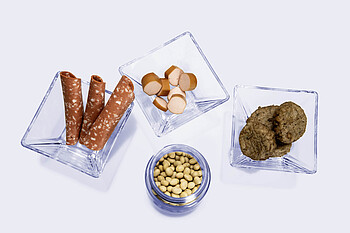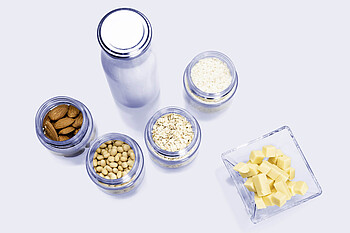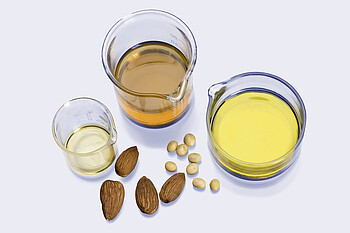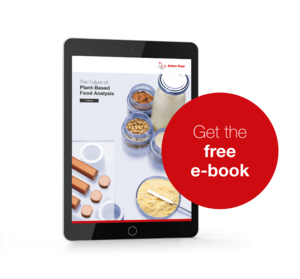The Future of Plant-Based Food Analysis
Providing food for nearly eight billion people each day is a significant global challenge. There is an increasing need for food with increased shelf life, transportability, and nutritional value at a reasonable cost and with a minimal environmental impact.
One rapidly growing segment within the food industry is plant-based foods.
Key challenges include ensuring they are consistent, shelf-stable, and safe with the additional expectation that plant-based meat and dairy foods have a similar taste, mouthfeel, and shelf life as their meat and dairy counterparts. Specific measurements that enable the optimization of these parameters include rheology, viscosity, particle size, density, oxygen content, oxidation, dissolved oxygen, concentration and colloidal stability, consistency, and testing for heavy metal contamination.
The Must-Read Anton Paar E-Book: “Field Guide to Plant-Based Food Analysis”
Developing great-tasting, shelf-stable, and enjoyable plant-based foods can be challenging. This e-book, containing measurement data on a wide range of plant-based foods, helps you characterize and optimize meat and dairy alternatives so that they are enjoyable to consumers, healthy, safe, and similar in look, feel, taste, and texture to their animal-based counterparts.
Plant-Based Meats

Plant-based meats are one of the fastest-growing, yet most challenging, segments of the plant-based foods industry. The growth is driven by the need to reduce the environmental impact of the beef industry, a desire for healthier alternatives to animal-based meat, and by the growth in the number of people choosing a vegetarian/vegan diet. The challenges come from the difficulty in replicating the taste, texture, mouthfeel, firmness, and even sear-marks of animal-based beef, chicken, or pork.
The key to success in developing plant-based meats is to accurately measure the physical and structural properties of the plants being used as well as additives such as starches, oils, and other proteins throughout the entire process: from raw ingredients to mixing, forming, and cooking the meat.
Specific parameters critical for measuring plant-based meats include rheology, viscosity, and consistency as well as how these properties change over time and at various temperatures to mimic the cooking process.
Plant-Based Dairy

Plant-based dairy products including milks, cheeses, and yogurts are the largest and most varied segment of plant-based foods. The growth in this segment comes from the need to avoid lactose intolerance and dairy allergies as well as a movement away from the dairy industry. Key challenges when developing plant-based dairy products include optimizing taste, flow, mouthfeel, and stability.
Key physical property measurements needed for plant-based dairy products include particle size, oxygen content, viscosity, consistency, density, concentration, dissolved oxygen, and heavy metal analysis.
Plant-Based Oils and Food Additives

Plant-based oils and other additives are commonly used in many plant-based food preparations. They are used to modify the flow properties, consistency, texture, and mouthfeel as a way to either improve the customer experience or to enable the food to better mimic its animal-based counterpart.
The key to analyzing plant-based additives is to use a wide range of techniques for analyzing the physical properties of such additives as raw ingredients, during the mixing/formulation stage, in the final product, and during cooking and consumption. Key examples include, again, viscosity, density, rheology, particle size, purity analysis based on refractive index measurement, oxidation stability, consistency, and metal testing.

